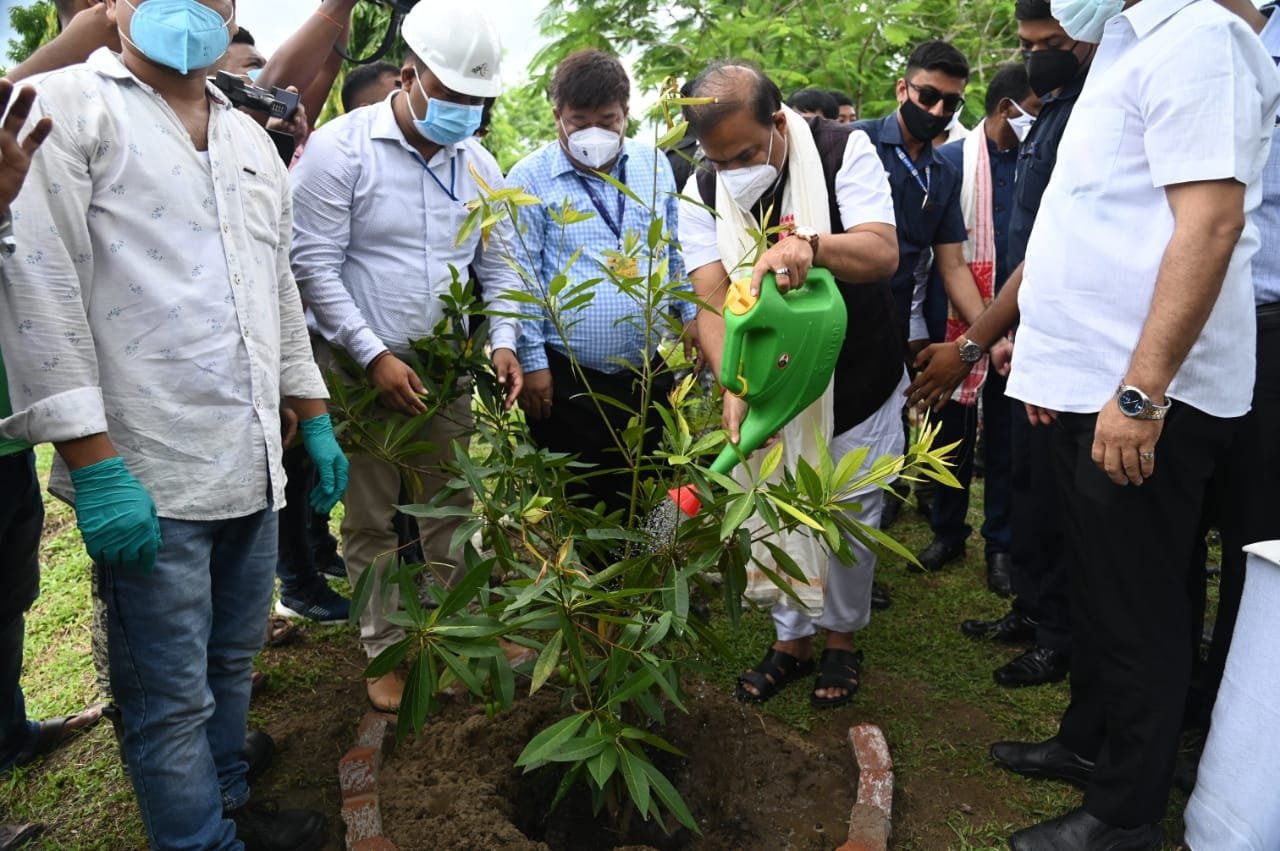NE UpdatesHappeningsBreaking News
Massive afforestation drive to expand green cover in Assam

June 20: Massive afforestation drive is on to increase green cover in Assam. The Environment and Forest department has taken up mega plantation drives in different parts of the state, with focus on degraded land.
The area covered under afforestation schemes under Assam Project on Forest and Biodiversity Conservation (APFBC), Compensatory Afforestation Fund Management and Planning Authority (CAMPA) and State Owned Priority Development (SoPD) of Social Forestry is 35,916 hectare.
 It may not be out of place to mention here that more than four crore seedlings have been distributed free of cost to the people against the target of 10 crore seedlings in mission mode under Pollution Free Assam. Under Phase II of APFBC, 12,500 hectare will be brought under plantation, besides 1,800 hectare plantation under CAMPA. Sahitya Manishi Upabans have come up in 24 districts of the state. Each Upaban showcases rich indigenous floral biodiversity of around 1,000 plant species having medicinal values in an area of three hectare.
It may not be out of place to mention here that more than four crore seedlings have been distributed free of cost to the people against the target of 10 crore seedlings in mission mode under Pollution Free Assam. Under Phase II of APFBC, 12,500 hectare will be brought under plantation, besides 1,800 hectare plantation under CAMPA. Sahitya Manishi Upabans have come up in 24 districts of the state. Each Upaban showcases rich indigenous floral biodiversity of around 1,000 plant species having medicinal values in an area of three hectare.

 Another step toward strengthening conservation effort is reconciliation of forest boundaries with the help of Differential Global Positioning System (DGPS) and satellite imaginary under CAMPA. “It will be done in three phases starting with reconciling the forest boundaries of some of the divisions on a pilot basis,” said a forest official privy to the development. The department is among the front runners under SDG 15: Life on Land in NITI Aayog’s SDG India Index 2020-2021.
Another step toward strengthening conservation effort is reconciliation of forest boundaries with the help of Differential Global Positioning System (DGPS) and satellite imaginary under CAMPA. “It will be done in three phases starting with reconciling the forest boundaries of some of the divisions on a pilot basis,” said a forest official privy to the development. The department is among the front runners under SDG 15: Life on Land in NITI Aayog’s SDG India Index 2020-2021.
Among the 17 broad based global goals (Sustainable Development Goals) with 232 indicators, the State of Assam had a composite score of 78 on SDG15 this year which is higher than the national average score of 66. Though there was a 12 per cent decline this year as compared to the composite score of 90 in SDG India Index 2019-2020, the Environment and Forest department managed to make it to the front runners’ slot – not a mean feat by any standards. “The downward slide of 12 points is mainly due to over a double increase in number of wildlife cases detected in protected areas, thus impacting the score,” said a forest official, adding that most of the indicators have shown either no change or marginal improvement.
 As regards forest plus tree cover as a percentage of the state’s total geographical area, Assam has registered 37.91 per cent as against the all India average of 24.56 per cent. In terms of percentage of state’s geographical area covered under afforestation schemes, the state with 0.457 per cent is marginally lower than the national average of 0.51 per cent. Insofar as percentage of degraded land over total land area is concerned, the State stands at 9.45 per cent as against the national average of 27.77 per cent.
As regards forest plus tree cover as a percentage of the state’s total geographical area, Assam has registered 37.91 per cent as against the all India average of 24.56 per cent. In terms of percentage of state’s geographical area covered under afforestation schemes, the state with 0.457 per cent is marginally lower than the national average of 0.51 per cent. Insofar as percentage of degraded land over total land area is concerned, the State stands at 9.45 per cent as against the national average of 27.77 per cent.
 As a way forward towards conservation efforts, the Environment and Forest department is focusing on biodiversity conservation and forest area development, including restoration of degraded forests, habitat improvement of wildlife and extension, human-wildlife conflict management, identification, mapping, securing of corridors, extension of forest cover, enhancing forest and ecosystem resilience to frequent floods and droughts and disaster risk reduction.
As a way forward towards conservation efforts, the Environment and Forest department is focusing on biodiversity conservation and forest area development, including restoration of degraded forests, habitat improvement of wildlife and extension, human-wildlife conflict management, identification, mapping, securing of corridors, extension of forest cover, enhancing forest and ecosystem resilience to frequent floods and droughts and disaster risk reduction.
 It will also given added thrust to community strengthening, forest and non forest based livelihoods, recreation forestry that include aesthetic forestry and developing ecotourism sites, institutional strengthening and capacity building of staffs and officers, structural reorganisation of field staff and technology interventions and partnerships with local people, NGOs, CBOs, educational and Research and Development institutions. As climate change is intertwined with environment (SDG 13: Climate Action), the Forest department has been making assessment of climate change impacts coupled with strategies to adapt forests to climate change while preparing a baseline for state forest reference level.
It will also given added thrust to community strengthening, forest and non forest based livelihoods, recreation forestry that include aesthetic forestry and developing ecotourism sites, institutional strengthening and capacity building of staffs and officers, structural reorganisation of field staff and technology interventions and partnerships with local people, NGOs, CBOs, educational and Research and Development institutions. As climate change is intertwined with environment (SDG 13: Climate Action), the Forest department has been making assessment of climate change impacts coupled with strategies to adapt forests to climate change while preparing a baseline for state forest reference level.





